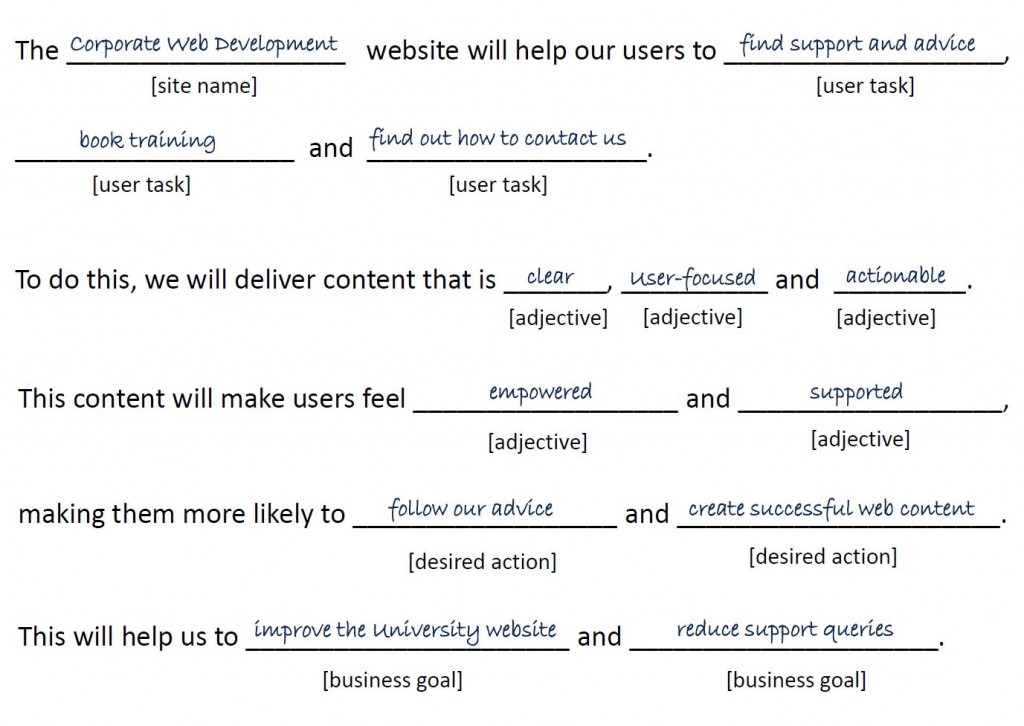Why DO you have a website? Can you answer this question in around 50 words? Any bets you’ll find it hard.
Newcastle University has around 150 external facing websites.
Our best ones have an audience in mind, have a clear set of tasks or goals to support and we measure their success. They have a site purpose.
The worst ones exist because a new department or team was set up or we wanted to tell some people about something. These sites decay over time. They aren’t updated. No-one knows if they are supporting our business goals. They fill our web real estate with waffle and ‘just in case’ content. They have no site purpose.
Defining your site purpose
As part of our Go Mobile programme we’re writing a site purpose statement for each site. Grab a piece of flipchart paper and work through these steps:
- Know your audience
Who are the key audiences for your site? Brainstorm with colleagues to make sure you know who you are writing for. Be mindful of not just saying “everybody”. You’ll find it hard to prioritise content if you do.
- Tasks
For each of your audiences, think about what they want to do when they get to your site. What are their top tasks? Two or three will do.
- Business Goals
What do you want your site visitor to do? Business goals should be measurable eg increasing student applications by 10 % rather than being a task like “I want to apply”. Again, two or three will do.
- Content and tone of voice
Come up with some words and phrases that describe how you want to come across to your readers. Are you clear, complex, conversational or professional? How do you want them to feel: confused, empowered, confident or suspicious?
Once you’ve got all this, you’re ready to write your site purpose.
Writing your site purpose
We’re using an idea presented by Sara Wachter-Boettcher at Confab Europe 2014. You can find out more about it on her blog post: Content Mad Libs.
A Mad Lib is a fill-in-the-blanks exercise where, once completed, you have the beginnings of a site purpose. It looks a bit like this and comes in at around 50-70 words:
I’m not going to lie, some editors have found it painful to prioritise only two or three top tasks.
In some cases, we’ve explored whether we need more than one site purpose – more of a site section purpose if you like.
This tells me that some of our sites have too many audiences to support and perhaps need dividing up into smaller sites.
Content putter-uppers no more!
The site purpose statement gives our web editors a tool to prioritise content according to audience and business need.
Our editors aren’t just there to put content up on the site. Their role is to question, prioritise and rewrite.
So, when you get asked to add some content to a site, the answer isn’t just “yes, of course”.
You question the content: is it for my audience, does it support a task or business goal, does it need rewriting?
Then the content gets added. Or, more importantly, doesn’t, if it doesn’t fit the site purpose.
Have a go
There’s no need to wait for the Go Mobile programme to try and come up with your site purpose. Have a go using the steps provided. We’ve also got some templates on our website to help you (University Login required). Get in touch if you need some further help with this.
Let us know how you get on in the comments. Happy Madlibbing!


